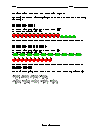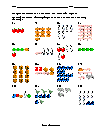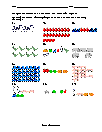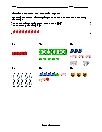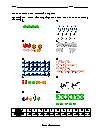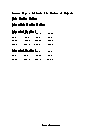Estimate the Number of Objects Worksheets
How to Estimate the Number of a Group of Objects - Math is a very tricky subject, for sure. But there are many questions and many definitions in the subject that are easy and fun to solve. If you have problems regarding what estimation is and you are unsure of how you can Estimate the Number of Objectss in a group, then here are a few tips to help you learn estimating groups of objects in no time! But before we start, do you know what estimation is? Let’s take a quick review! Estimation is a rough idea of what the value is equal to without having a proper idea of the number. Estimation requires operating mentally, and often there is no need to get an exact result, instead only an idea or an estimate is required of the outcome. Here is what you need to do to estimate the number of a group of objects: 1. We only round the summands to the nearest tenth. 2. So you need to remember that if the number is less than 5, we round a number less. 3. And if the number is 5 or greater than 5, we round a number more. 4. Take a look at the objects that have been given to you and figure what the closest number is. 5. Once you can identify the nearest number of objects, you can easily estimate!
-
Basic Lesson
Demonstrates making educated guesses. Also includes practice problems. Guess how many objects there are and then check by counting.
View worksheet -
Intermediate Lesson
Uses a larger number of objects than what is presented in the basic lesson.
View worksheet -
Independent Practice 1
16 problems ask you to guess how many and then check by counting. The answers can be found below.
View worksheet -
Independent Practice 2
12 problems ask you to guess how many and then check by counting. The answers can be found below.
View worksheet
How to Estimate a Number in a Group
Visual estimation is about finding the value of a certain calculation without having to get the right answer. There are two key rules here: first is, we are not trying to get the actual answer, just get close to it. Secondly, we need estimation that is good enough to be used in place of the actual answer. For example, look at the picture below and identify how many objects are there.
We could count them and it may be difficult but not impossible. But what if we are not looking for an exact answer. Just something close enough would work as well. Given there are 5 different shapes, a random guess would be there are 10 of each. 10 x 5 = 50. We estimated that there are around 50 figures in the picture above. However, the actual answer is 48. This is closer to the real answer and can be used.
Fun in the sand:
Using different size shovels and buckets guess how many scoops will fill each size. Then estimate how many small buckets it will take to fill a larger one. Compare how much sand gets scooped with shovel vs. small bucket and so on.

